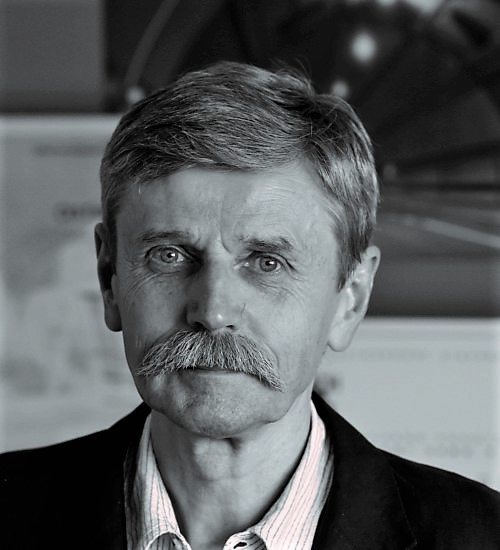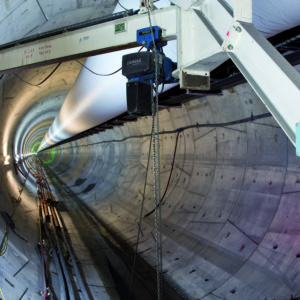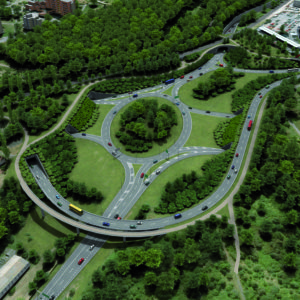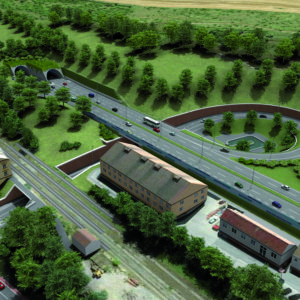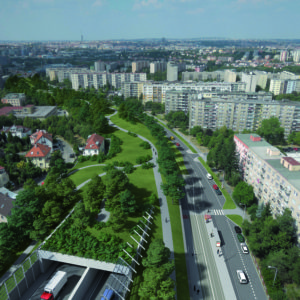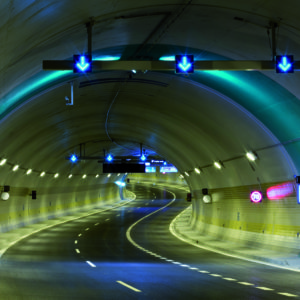In July, the company celebrated a quarter century since its founding. Looking back, what do you consider
the greatest success?
It is the fact that we are still here after twenty five years, and that we have grown at least threefold.
The healthy core, with which we founded the company, stayed with us. We are also one of the few
companies that have survived for such a long time, without being swallowed up by large conglomerates.
This is what I consider the greatest achievement. The most beautiful period for the company? Signing
a contract for realization of the Blanka tunnel complex in 1998, and tapping on the foundation stone of
Mrázovka tunnel by Mr. Kasl, the Mayor. We were facing a unique task of being a chief coordinator of the
complex of constructions, providing it with the procedures and designs of tracing, transport and security
solutions, technologies, geological surveying, etc.
The Blanka tunnel complex is undoubtedly your most discussed construction. What is special about it?
First of all, it is the unique technical solutions at the highest level, whether in terms of the construction
process, structures, or technological equipment. We consider some things normal, but in a number of
similar constructions abroad, they are a big challenge for designers or builders. Coincidentally, I am
a member of the Technical Committee of the World Road Company (PIARC ). It›s a special group dealing
with complex underground structures, such as the underground, road tunnels and railway constructions,
as well as with their functionality and interdependence. Within our survey in the last four years, we
have compared solutions of about twenty seven buildings. Blanka was one of them. What the experts
most appreciated was that we have succeeded to link the management of the underground with the
management of surface communications into a single control center.
What was the biggest challenge?
The initial task was only: to connect Malovanka with Pelc-Tyrolka, but not to link it to Bubeneč and
Dejvice. We thought: this is not functional, is it? How to connect the routes then? Should there be
flyovers? It was a huge challenge due to the tracing, geology, which is so quaint in Prague, where you
can find the slowly flowing slate just next to the hard quartzite. We addressed foreign experts, like prof.
Mencl from Slovakia, Eisenstein from Canada. A number of our top professionals participated in the
project. We were extremely lucky to get a contact at the State Tunnel Research Institute in Lyon (CETU ).
We have been closely cooperating with them, in some solutions we could benefit from their experience.
It was a wonderful job.
Was it possible to use any of the solutions from other projects in the world, or were you always looking
for new solutions suitable for our conditions?
After large fires in Alpine tunnels in 1999, the entire expert public specializing in tunnels was discussing
their safety in the following five years. In 2004, the EU directive on safe operation of tunnels in trans-
European road network had to be incorporated in the Blanka project. We used all the new results of fire,
engineering and other tests, which were being carried out everywhere in the world at that time. We tried
to get every information, wherever a similar tunnel or solution appeared, and use it for our own designs.
I myself was in Australia to look up a special ventilation system that could be used here as well.
What is the impact of Blanka tunnel on traffic?
Less than a year of trial operation has passed so far. To start with numbers calculated on the grounds of
hard data after six months, the primary effect is time saving: all drivers using the tunnel for a year of its
operation saved about 270 years on their routes. It sounds rather absurd. It means that one particular
driver, who passes Blanka on his way to work and back five times a week, gains about forty-four hours
to spare per one year. Not to mention the costs saved for the ride. We are also satisfied with the
result of the investigation conducted by the Paris Commission, which visited Prague on the grounds of
a complaint about the impact of Blanka on the historic center of Prague, registered in the UNESCO list.
The final report admitted the beneficial effect of Blanka. Our solutions include not only the surrounding
buildings, but also revitalizing the territories on the borders of the historic city, and creating new parks,
for example in Myslbek Street and Prašný Bridge.
At the moment, you are supervising the second month of the trial operation, can you take over a permanent
operation of Blanka?
There is a number of large companies worldwide, providing for tunnel constructions from their designing
to operating. We would be happy for such an option, too. Who else should know how to operate the
tunnel better than the one who created him? It would be functional to use our knowledge and experience.
At the moment, however, after the final approval, the operation should be taken over by the Technical
Road Administration of the city of Prague.
Is there any difference for users between trial operation and full operation?
There is no difference for users. Along with the normal operation, various inspections and tests are
conducted, everything is tuned up to make the final inspection of the building by the end of this year.
After its opening, Blanka is generally changing its impact on traffic in some parts of Prague – the traffic
has to be re-organized, traffic light intervals must be regulated, traffic intensity is being transformed.
That is of course not to say that the construction has brought only the positives; in V Holešovičkách
Street, the traffic load has expectedly increased, but the traffic is more fluent and therefore the impact
on the site is not as strong as was pronounced before. In several places of associated roads, the
intensity was increased, showing weak points unable to transfer larger volumes of traffic. These are the
places that would have been eliminated long before, if realization of superior communications networks
and related investments had continued. The city circuit, anchored in the zoning plan by a decree, is not
completed, and neither are the associated radials and the outer circle.
SATRA, spol. s r. o.

Sokolská 32
120 00, Praha 2 – Nové Město
Česká republika / Czech Republic
Zdroj: redakce AW 2016






 Čeština
Čeština